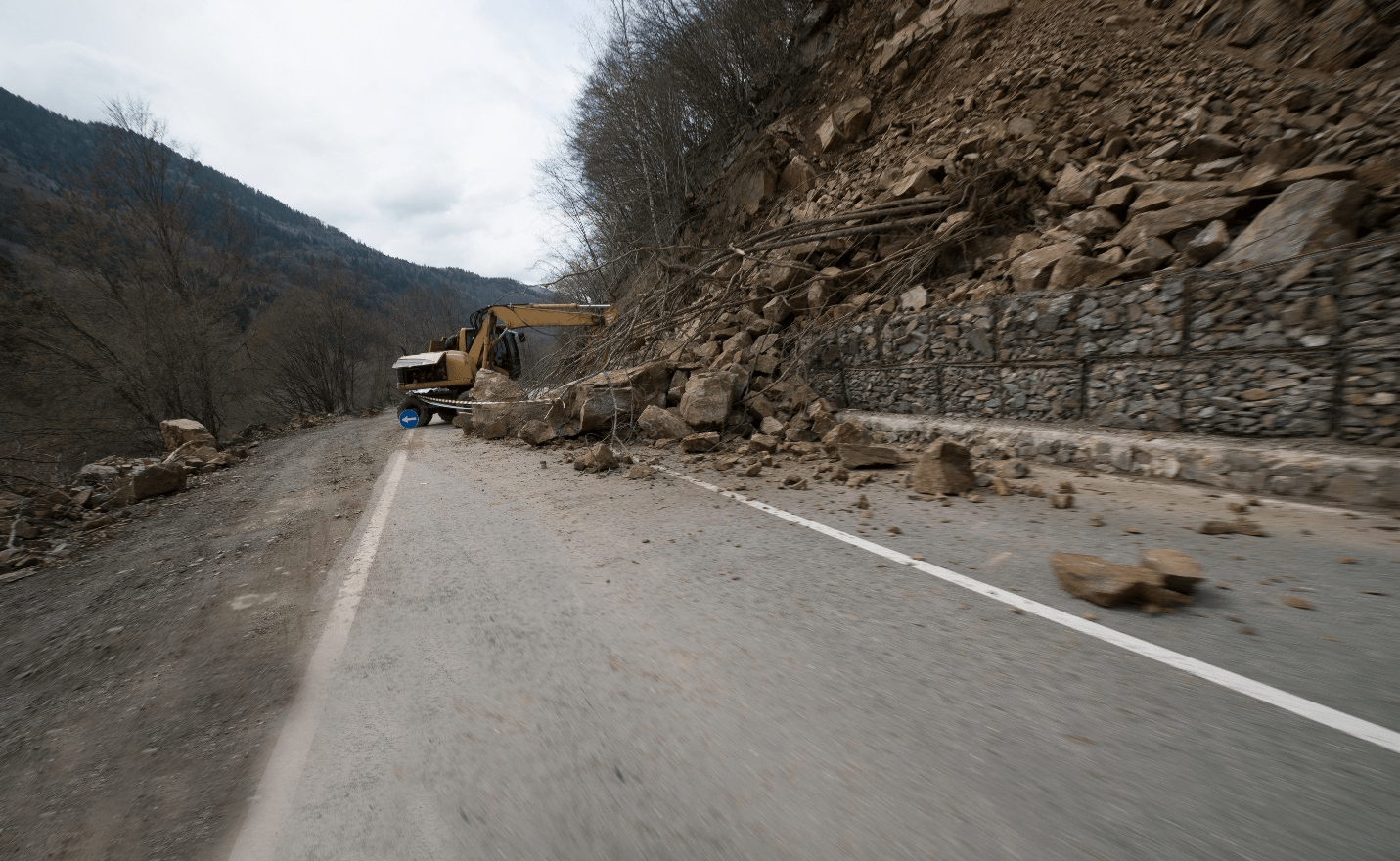At The Morgan Law Group, our insurance claims attorneys represent clients in California, Colorado, Florida, Mississippi, Louisiana, Tennessee, and Texas, and know that each of our client’s home and property damage insurance coverage is unique. The one thing they all have in common is that it rains in each location – and sometimes, heavily.
After a series of devastating storms this winter, data reveals parts of California are 200% over the historical average for rainfall year to date, according to USA Today. These storms saturated the steep mountains and bald hillsides scarred from wildfires along much of California’s long coastline, causing hundreds of landslides and mudslides.
Since New Year’s Eve 2022, the California Department of Conservation’s landslide mapping team has documented more than 300 mudslides. The question becomes – no matter where you live – who pays for the devastating damages?
Difference Between a Mudslide and a Landslide
The terms “mudslide” and “landslide” often appear in discussions about property damage, yet their coverage under standard insurance policies varies significantly.
A mudslide, or debris flow, describes a river of liquid and flowing mud on the surfaces of normally dry land areas, usually when water rapidly accumulates in the ground, leading to a surge of water-saturated rock, earth, and debris. Mudslides can be triggered by prolonged rainfall, rapid melting of snow, or changes from recent construction, making the soil unstable.
A landslide involves a wide range of ground movements, such as rock falls, deep failure of slopes, and shallow debris flows. Typically, these movements are triggered by factors like heavy rainfall, earthquake, volcanic activity, or changes in groundwater, destabilizing the slope integrity. Geologically, a landslide results from shifts in layers of earth, predominantly consisting of large rock materials.
While both mudslides and landslides pose significant risks to properties, they are generally not covered under standard insurance policies in the United States. Property owners at risk of these disasters should consider obtaining specialized insurance to ensure comprehensive protection.
When Does Homeowner Insurance Cover Mudslides?
While every homeowner’s insurance policy is different, most include a list of perils that are not covered by the policy. These are often referred to as, “excluded perils.”
Unfortunately, homeowner’s insurance policies will never cover damage caused directly by landslides, mudslides, or mudflows. Mudflows, which are more liquid than slides, are not covered because they fall under the same provision that excludes floods.
If you are in a high-risk area for mudslides, you may want to consider getting extra insurance protection should one happen, as the cost of the damage can be financially overwhelming.
Difference in Coverage
To insure your home against landslides and mudslides, you will need additional insurance called a “Difference in Coverage” or DIC policy, often called gap coverage to cover damages that a standard property insurance policy will not. While not all insurance providers have DIC policies, when they are available, DIC policies can cover floods, earthquakes, landslides, and mudslides.
National Flood Insurance Program
While standard flood insurance may not directly cover mudslides, it usually covers mudflows. The distinction here is crucial: mudflows are a more liquid form of mudslides, characterized by a river-like flow of muddy debris. These are generally covered under the flood policies provided by the National Flood Insurance Program (NFIP), considering their similarity in behavior and impact.
Mudslides represent a significant risk for properties in prone areas and require careful consideration regarding mudslide insurance coverage.
- Assessment of Risk: You should evaluate their property’s vulnerability to mudslides, particularly if located near slopes or areas with loose, wet soil conditions prone to heavy rains.
- Review Policy Options: It is essential to consult with an insurance professional to understand the specifics of what is and isn’t covered under various policies. You should ensure your insurance coverage aligns with the geographical and environmental risks specific to your property.
- Preventive Measures: Beyond insurance, implementing landscaping and architectural designs that help stabilize the ground and manage excess water can mitigate the risk of mudslides.
Actively engage with insurance experts to tailor their coverage to their specific needs and take practical measures to reduce risk exposure.
What Can I Do If My Insurance Provider is Denying My Mudslide Claim?
Insurance companies will often undervalue a homeowner’s insurance claim, or deny it altogether, to minimize their losses. In some cases, they may cite a natural incident as the cause of the damage, just so it is listed as an uncovered event, even though it may not be fully accurate.
If you believe your mudslide damage is covered by your policy, get in touch with our experienced insurance claims attorneys. Call us today or complete our online form to schedule a free consultation and learn how we can help you understand your coverage details and pursue the outcome you deserve from your insurance policy without further delay.

